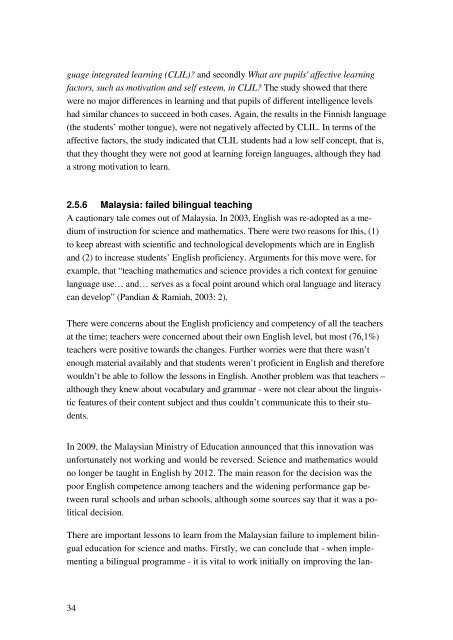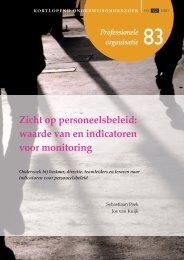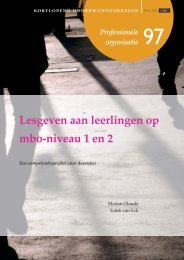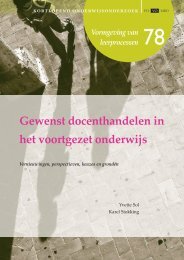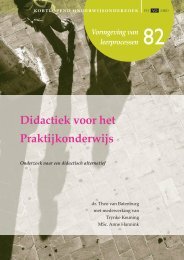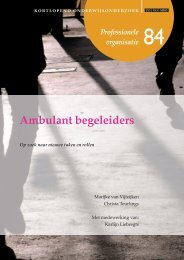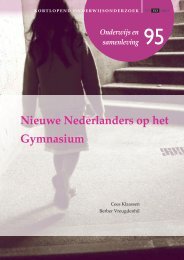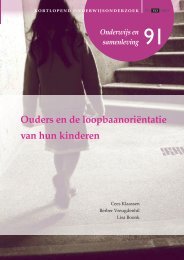Proud to be tvmbo - Kortlopend Onderwijsonderzoek
Proud to be tvmbo - Kortlopend Onderwijsonderzoek
Proud to be tvmbo - Kortlopend Onderwijsonderzoek
You also want an ePaper? Increase the reach of your titles
YUMPU automatically turns print PDFs into web optimized ePapers that Google loves.
guage integrated learning (CLIL)? and secondly What are pupils' affective learning<br />
fac<strong>to</strong>rs, such as motivation and self esteem, in CLIL? The study showed that there<br />
were no major differences in learning and that pupils of different intelligence levels<br />
had similar chances <strong>to</strong> succeed in both cases. Again, the results in the Finnish language<br />
(the students’ mother <strong>to</strong>ngue), were not negatively affected by CLIL. In terms of the<br />
affective fac<strong>to</strong>rs, the study indicated that CLIL students had a low self concept, that is,<br />
that they thought they were not good at learning foreign languages, although they had<br />
a strong motivation <strong>to</strong> learn.<br />
2.5.6 Malaysia: failed bilingual teaching<br />
A cautionary tale comes out of Malaysia. In 2003, English was re-adopted as a medium<br />
of instruction for science and mathematics. There were two reasons for this, (1)<br />
<strong>to</strong> keep abreast with scientific and technological developments which are in English<br />
and (2) <strong>to</strong> increase students’ English proficiency. Arguments for this move were, for<br />
example, that “teaching mathematics and science provides a rich context for genuine<br />
language use… and… serves as a focal point around which oral language and literacy<br />
can develop” (Pandian & Ramiah, 2003: 2).<br />
There were concerns about the English proficiency and competency of all the teachers<br />
at the time; teachers were concerned about their own English level, but most (76,1%)<br />
teachers were positive <strong>to</strong>wards the changes. Further worries were that there wasn’t<br />
enough material availably and that students weren’t proficient in English and therefore<br />
wouldn’t <strong>be</strong> able <strong>to</strong> follow the lessons in English. Another problem was that teachers –<br />
although they knew about vocabulary and grammar - were not clear about the linguistic<br />
features of their content subject and thus couldn’t communicate this <strong>to</strong> their students.<br />
In 2009, the Malaysian Ministry of Education announced that this innovation was<br />
unfortunately not working and would <strong>be</strong> reversed. Science and mathematics would<br />
no longer <strong>be</strong> taught in English by 2012. The main reason for the decision was the<br />
poor English competence among teachers and the widening performance gap <strong>be</strong>tween<br />
rural schools and urban schools, although some sources say that it was a political<br />
decision.<br />
There are important lessons <strong>to</strong> learn from the Malaysian failure <strong>to</strong> implement bilingual<br />
education for science and maths. Firstly, we can conclude that - when implementing<br />
a bilingual programme - it is vital <strong>to</strong> work initially on improving the lan-<br />
34


